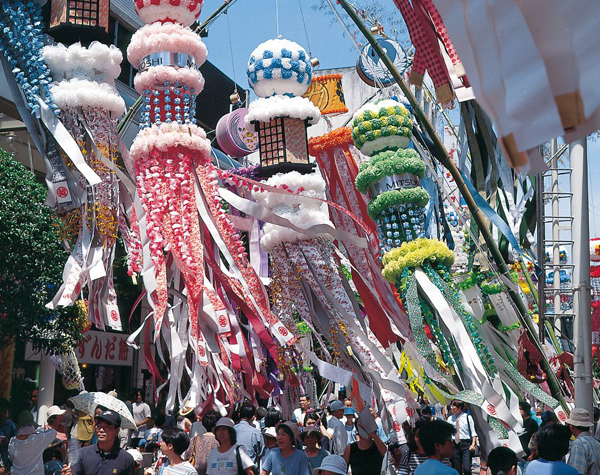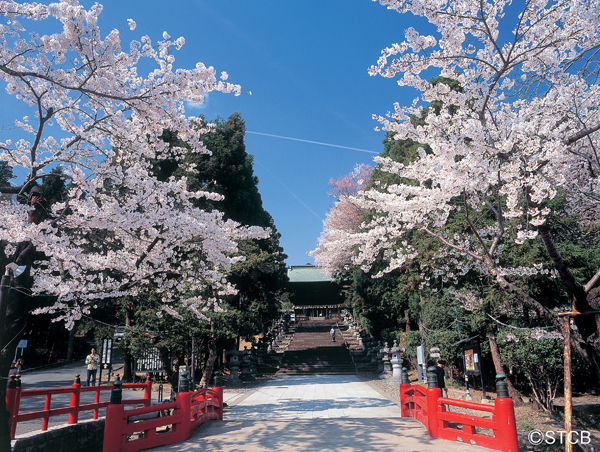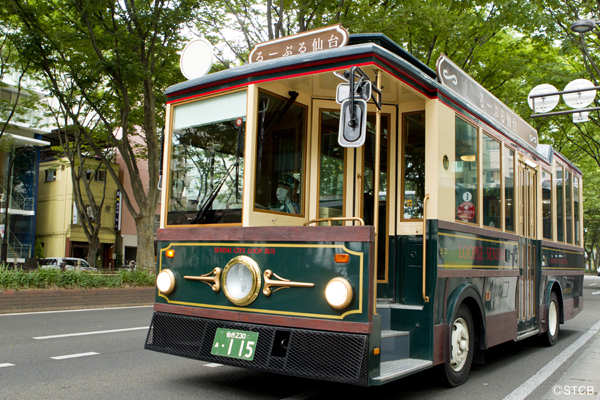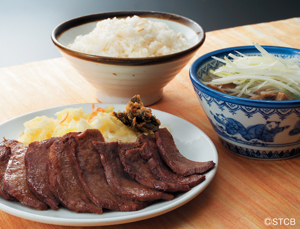Affectionately called the City of Trees, Sendai is known for the abundant greenery, rich culture, numerous universities and variety of festivals that make it the beating heart of Tohoku. The capital of Miyagi Prefecture is under two hours north of Tokyo on the bullet train; it is an area blessed with unique local delicacies, intriguing historical sites and has some wonderful scenery in the surrounding areas.
by Matthew Hernon
Despite being a major air, rail and sea hub – infrastructure has largely recovered since the earthquake and tsunami of 2011 – as well as being home to over a million people, there is a quiet, calm feel to the place. Immediately upon arrival you’ll feel that, with the many parks and Zelkova trees that gave it that green reputation, it is a wonderful city to stroll around in spring – see the late-blooming cherry blossoms, above.
Sightseeing
The most convenient way to see Sendai is to buy a 600 yen day pass at the main station for the Loople Bus (a charming, streetcar style sightseeing bus) which stops at most of the city’s popular tourist destinations, including numerous sights paying homage to the great Daimyo and first Lord of Sendai, Masamune Date.
One of the early stops on the route is Zuihoden, a visually stunning Momoyama-style Mausoleum that houses the remains of Masamune Date and his two successors. Designated a national treasure in 1931, it is located in a beautiful part of the city, surrounded by huge cedar trees that are meant to symbolize the long history of the Date clan.
The museum next to the Zuihoden exhibits some of the family’s personal artifacts, along with specimens of their bones and hair. Displaying even more relics from the clan, Sendai City Museum is also worth a visit. It is a two-storey building, opened in 1961, counts Masamune Date’s armour amongst its thousands of objects – this is believed to have been the inspiration behind Darth Vader’s appearance in Star Wars.
It is not just in the Mausoleum and museums where Masamune’s powerful force can be felt. A statue of the man who was known as the ‘One Eyed Dragon’ hovers impressively over the city at Aoba Hill. The main fortification of Sendai, Aoba Castle, built by Masamune in 1601, has itself has been destroyed, but the site remains one of the most popular in the city. There is a park with a fantastic view of Sendai, while the exhibition hall has an impressive computer generated film depicting the castle in its glory days.
Osaki Hachiman-gu, a striking shrine covered in black lacquer with a golden leaf decoration is another highlight not to miss, Miyagi Museum of Art, which displays work from both international and local artists is worth a trip and the Tohoku University Botanical Gardens, which boasts a wide variety of plants from around the world might top the lists of any amateur botanists. All can be easily accessed via the Loople bus. For those with a little more time, a day trip to Matsushima bay is highly recommended.
One of the Nihon Sankei (three most scenic spots in Japan), you’ll find here 260 pine clad islands scattered around, each formed mysteriously by the waves that have smashed against them over millions of years. The area was fortunate to get off relatively lightly in the tsunami, in part, locals say, because of the islands and the protection they offered; still now, many knowledgeable local skippers will take you around the area in sightseeing boats and there is much to find.
Food & Drink
Enjoying fruitful harvests from the land and sea, Sendai is well placed to offer fresh ingredients in abundance, including miso, rice, leeks, Chinese cabbage and beef. The most famous of all local dishes here is gyu-tan – thinly sliced cow’s tongue – usually charcoal grilled and served with pickled vegetables and sometimes rice.
Now a national favourite after the trend supposedly spread initially from one yakitori shop in the town, the succulent meat is served at numerous stores near the city centre, with Rikyu and Kisuke particularly popular, and features heavily on Sendai’s izakaya menus.
Check out Gyutan Dori (Gyutan Street), on the 3rd floor of Sendai Station for an easy initiation with plenty of choice – prices range between a reasonable ¥1,000 to the slightly more deluxe ¥2-3,000 mark at lunch.
In addition to tongue, Sendai is also known for its seafood. The fishing industry suffered badly after the earthquake and tsunami and its recovery is vital to the region’s economy. Awareness of seasonality is key to the livelihoods of those involved in the fishing industry but it is also celebrated by the many local restaurants with a fishy focus – this is one town in which you’ll sure know when scallop or oyster season has arrived, for example, and locals are rightly proud of the quality and freshness they can offer. One of the most unique dishes in the city is Sasa Kamaboko, white fish meat with local seasonings that is baked in bamboo, resulting in a leaf-shaped loaf.
One of the best ways to enjoy local cuisine is at Robata restaurant, where customers sit around a cooking fire with dishes prepared directly in front of them. A fun way of dining that originated in Sendai, your meal is best complimented by top quality local sake.
Miyagi Prefecture is home to more than 50 sake brewers, with more than half of them having won a Gold prize at the National New Sake Awards. Nikka’s Miyagiko Distillery does its bit, too, for booze-hounds or connoisseurs who find themselves in the area: one such man was its founder, Masataka Taketsuru, who chose to make whisky at the location because it reminded him of Scotland, where he’d learned his art in the 1920s before setting up Japan’s first distillery in Hokkaido. It is a one-hour bus journey from Sendai Station to the distillery, with your reward for making the trip some tasters during the free tour.
Festivals
One of the best times to go to Sendai is towards the end of May, during the Aoba Festival. Commemorating the death of Masamune Date, the festival dates back the 1600s and is now one of the largest in the Tohoku region. Along with the mikoshi portable shrine procession, you can see a parade of Samurai dressed in full armour, a Yamaboko (festival cars) float and sparrow dancing that is unique to Sendai.

Seasonal festivals such as the Tanabata Matsuri (in 2013 held between August 6th and 8th) are the highlights of the year in Sendai
Another popular event in the city is Sendai Tanabata Festival. It celebrates the meeting of the deities Orihime and Hikoboshi, who are represented by the stars Vega and Altair. According to legend they are only allowed to meet once a year – on the seventh day of the seventh month of the lunisolar calender. The festival is held in a number of cities, including São Paulo, Brazil, though it is Sendai’s festival that draws the biggest crowds. The highlight is a parade of 10m or more bamboo poles – a spectacular sight.
Other festivals of note include the Donto-sai Festival, held at Osaki Hachiman Shrine every January, the Jozenzi Street Jazz Festival in September and the Michinoku-Yosakoi Festival in October, with unique musical arrangements from folk to rock.
For more information visit the official Sendai Tourism website: www.sentabi.jp/en/
All images courtesy of Sendai Tourism.










